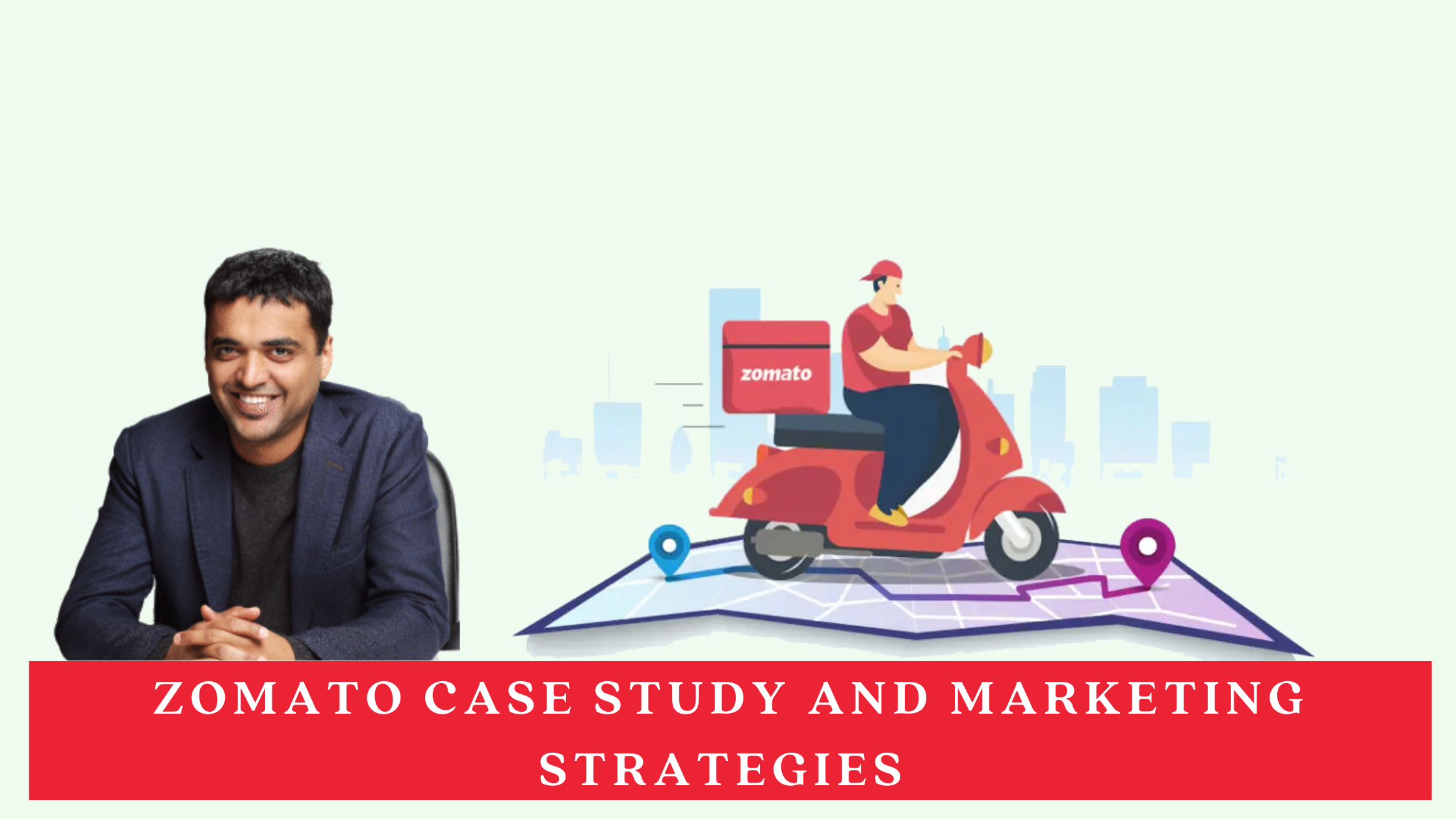Food is an important part of life. It brings together families, lovers, friends, people from all spheres of life. What’s the one thing that is common to all special occasions? They generally involve food. In the modern revolution, we have come to love the comfort and as life has become much more fast-paced, so has our relationship with food. There isn’t time to stand in queues for restaurants or go grocery shopping to cook up a meal.
And this is where an online food delivery service like Zomato found its footing. Zomato aimed to do the tedious work that is required to get a good meal by delivering it straight to you from the tap of a screen. Zomato is an Indian start-up that has achieved heights and continues to grow even today. It faced its fair share of highs and lows just like any company but it overcame all adversity to become a household name in 2021. This is why we are going to analyze Zomato Case Study.
The founders of Zomato
Zomato was founded by two friends, Deepinder Goyal and Pankaj Chaddah in July 2008. They are both IIT graduates and before launching the start-up, they worked with Bain & Co.
The idea behind Zomato
It seems like such a natural thing for food delivery to be online based now that it is tough to imagine a world where you had to physically go to a store/restaurant, every time you wanted to order food.
So, how did Deepinder and Pankaj come up with this simple yet revolutionary idea?
It happened one day when they were watching their colleagues queue up in the cafeteria for lunch. They noticed the long waiting line and thought about how much time people could save if they didn’t have to stand in the queues and get their food delivered to them instead. So, they took a few pictures of the Cafeteria’s menu and put them on the company website. Soon, a large number of employees started ordering from the website instead of going to the cafeteria directly.
This gave them the idea of starting a food-delivery service, which they named “FoodieBay”. Using FoodieBay, users could browse through the menu of eating joints and restaurants, check their reviews and ratings right from the comfort of their screens. At first, FoodieBay listed restaurants in Delhi, NCR on their website. Soon they expanded to other metro cities like Mumbai and Kolkata.
Zomato Rebranding
As FoodieBay started garnering more and more attention, the founders decided to revamp it to appeal to audiences outside India as well. They changed the name to Zomato and by 2016, Zomato had its own sophisticated app providing food deliveries from registered restaurants, through their thousands of valets.
Zomato Business Model
The Business Model followed by Zomato is called a Commission based Business Model. It charges the restaurants for every order placed through their app and in this way, it generates most of its revenue from the commissions.
However, now the major revenue source for Zomato has changed to advertisements that it offers to display on its portal. These are the food chains and restaurants that you see at the top of your search results as Ads.
Zomato Funding
Zomato has received various funding throughout its progression. We can track them as follows. In December 2010, Zomato raised $1 billion through Sanjeev Bikhchandani led Info Edge India. Then in 2013, Zomato received $13 million from Info Edge India which made the firm a 50% stakeholder in Zomato. It received various fundings from investors like VY Capital, Sequoia Capital and Temasek. If sources are to be believed, by 2018, Zomato had received funding of more than $300 million.
As a result of these Zomato raised $660 Million in the funding of Series J round led by Tiger Global Management and Kora. With this, Zomato’s funding rose to $3.9 billion.
Zomato IPO
If you are an active internet user, there is no way you could’ve missed out on all the buzz regarding the Zomato IPO. This is because the Zomato IPO was the Zomato’s IPO was among any online food delivery service business. It paved the way for other aspiring Indian start-ups. It opened on July 14, 2021, and closed on July 16, 2021. The IPO was created with the objective of raising INR 8,250 crore. The price band for the issue was fixed at INR 72-76 per share with a face value of INR 1 each. Investors were allowed to bid for a minimum of 195 equity shares.
Zomato Hyperpure
Zomato did something really unique and brilliant with their Hyperpure idea. They set a new standard for the quality of food and services in the food delivery sphere by introducing Hyperpure. Hyperpure is is the company’s B2B structure through which it provides the highest-quality ingredients and kitchen produce to restaurants. Almost all the things that food service would require is available on Zomato Hyperpure-Fruits and vegetables,Groceries, Dairy products, Gourmet and packaged foods, Beverages, Packaging and Kitchen Consumables, Bakery, Meats and seafood
Zomato Acquisitions
How do companies grow? There are a lot of reasons and one such reason is acquisition. An acquisition is when one company purchases most or all of another company’s shares to gain control of that company.
Zomato has done its fair share of acquisitions in its journey so far. Some of the major acquisitions made by Zomato are as follows-menu-mania, Czech Republic’s restaurant guide- Lunchtime, Slovakia’s restaurant guide, Italian restaurant search service- Cibando, Poland’s restaurant search service-Gastronauci, S-based NexTable and Delhi-based startup MapleGraph. Zomato also acquired Urbanspoon for $60 million in 2015. It made its biggest acquisition yet for $206 million in 2020 by acquiring Uber Eats.
Zomato Marketing Strategies
We cannot talk about the extraordinary success of Zomato without mentioning the digital marketing strategy that led to its popularity and made it a household name.
Zomato’s target audience includes youngsters, generally from the age groups of 18-25. People with busy lives and lazy habits, if you will.
They advertise themselves very well-they are relatable and appealing. Zomato’s digital marketing strategy is creative and flexible, unlike other corporate businesses that come across as too uptight. A number of their posts are funny, playful, or sarcastic, which appeals to the youth. They are active and engage with the audience. A happy audience is a happy business.
They also capitalize on popular events such as the IPL by launching their own cashback leagues like the Zomato Premier League. They have mastered the use of PPC ads and Youtube Marketing making sure their advertisements are so delicious, mouth-watering, and appealing that the consumer can’t resist clicking on them.
Conclusion
The continued success of Zomato is a testimony to its stellar Business strategy. Zomato established itself as a reliable food service when there weren’t any other food services like this available, taking full advantage of the low competition being the first mover. Due to its strong vision and results, Zomato has managed to receive heavy funding for its expansion. It has built a very strong network of Valets and Restaurants, managing to get the most popular restaurant on their list. Last but not the least, Zomato has never stopped aggressively marketing itself. TV, Newspapers, Social Media, Search Engines- you name it and you will see a Zomato advertisement there!










Thanks for your blog, nice to read. Do not stop.
Yes, Thank You
Thanks for ones marvelous posting! I seriously enjoyed reading it, you may be a great author.I will ensure that I bookmark your blog and will often come back in the future. I want to encourage you to ultimately continue your great work, have a nice morning!
Thanks